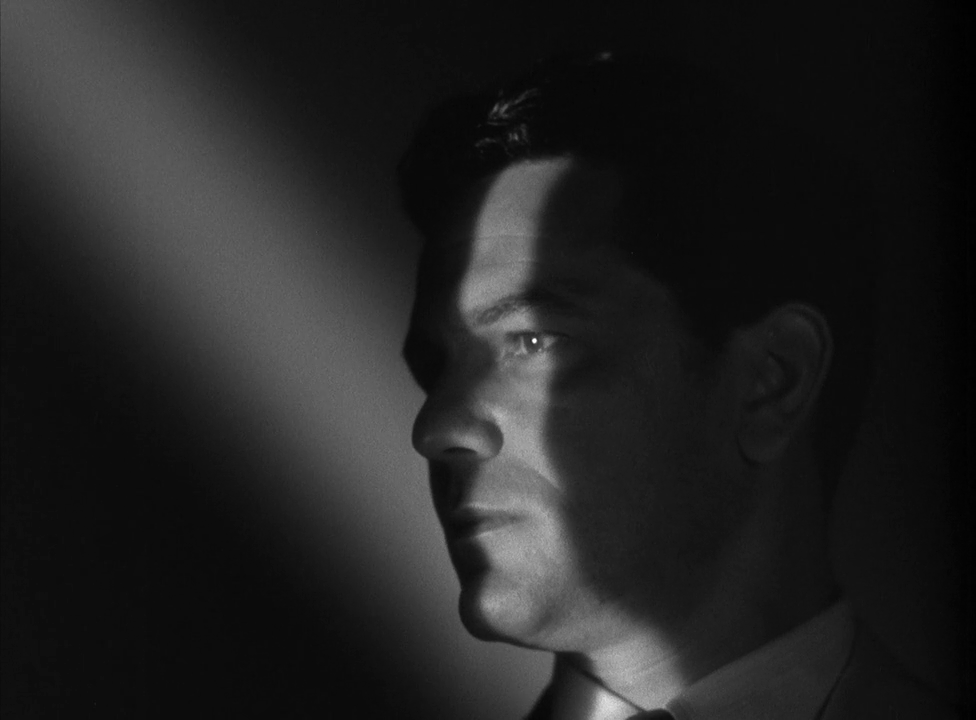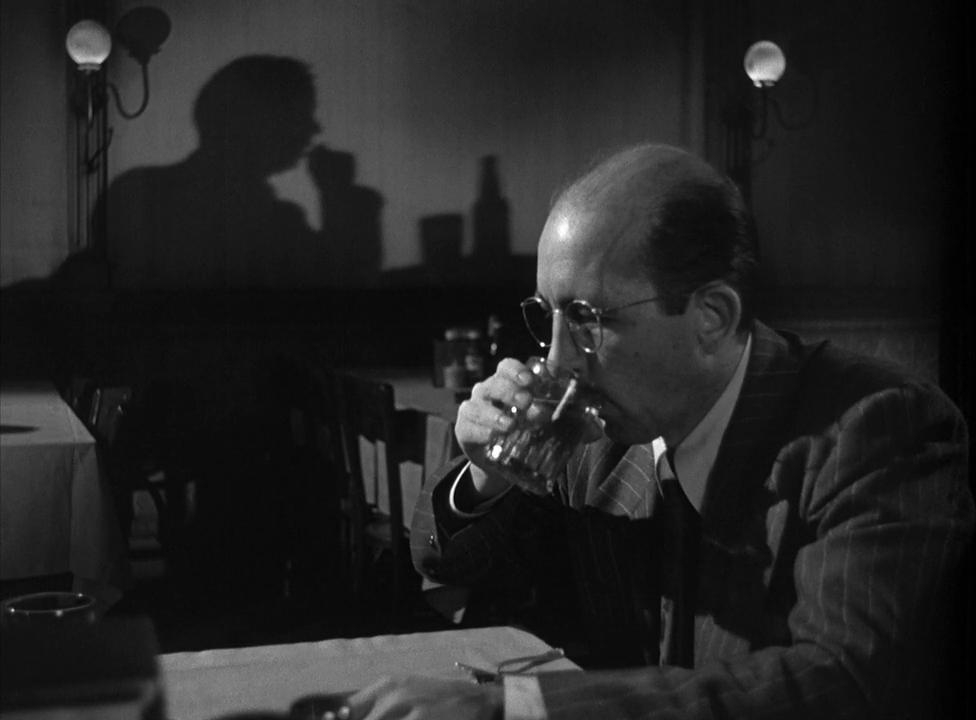Pink Floyd: The Wall (1982)
“Is there anybody out there?”
|
Synopsis: |
|
Genres, Themes, Actors, and Directors:
Review: Redeeming Qualities and Moments: Must See? Categories
Links: |
“Is there anybody out there?”
|
Synopsis: |
|
Genres, Themes, Actors, and Directors:
Review: Redeeming Qualities and Moments: Must See? Categories
Links: |
“From the very start, the travelers had adopted a certain marching order.”
|
Synopsis: |
|
Genres, Themes, Actors, and Directors:
Review: Redeeming Qualities and Moments: Must See? Links: |
“I disgust you. You find me repulsive.”
|
Synopsis: |
|
Genres, Themes, Actors, and Directors:
Response to Peary’s Review: Peary elaborates on this and other aspects of the film in his Cult Movies book, where he writes that “first time viewers are invariably impressed and surprised that such an unusual film exists; that Cocteau dared to make a fairy tale without drastically changing the content of the original story; that he dared make a film with ‘art’ and not box office success as the ultimate goal; and that he dared approach his film as a poet rather than as a typical movie director.” All of this rings true: it remains a genuine pleasure to revisit this film, despite its shortfalls — which include (for me) a storyline that seems to lag at times, perhaps due to Cocteau’s emphasis on lingering for atmospheric effects. On that note, Peary points out that cinematographer Henri Alekan’s “camera rarely moves, yet within his fixed frame comes a mesmerizing panorama of movements…, shadows, darkness, the clear white sky, and characters who, set against that sky, are filmed as if they were moving statues.” Regarding Peary’s frustration with the Beast’s transformation into “a human being who looks like Avenant with a permanent”, I can’t say I share it. Peary’s assertion that “Beauty suddenly becomes flirtatious, as if all along she had only pretended to be an innocent” is an unfair assessment of her piqued romantic interest; why does Peary begrudge her happiness at seeing a beloved companion transformed into a human who she can more easily envision as a viable life partner? Meanwhile, Peary’s fixation on the prince’s “effeminate” nature and hair perm are uncharitable at best (his hairdo is certainly no better or worse than that of Avenant). Peary’s ending statement in his Cult Movies review — “We aren’t pleased by any means. This transformation, the worst scene in the picture, almost ruins what went before it: a true king has been demoted to a prissy prince.” — is simply not true. For shame, Peary! (especially given that Marais was Cocteau’s real-life lover). Allow this fairy tale to end the way one might imagine it to in its original form, as intended by Cocteau. Redeeming Qualities and Moments:
Must See? Categories
(Listed in 1001 Movies You Must See Before You Die) Links: |
“You don’t belong at the track. What do you know about handicapping horses?”
|
Synopsis: |
|
Genres, Themes, Actors, and Directors:
Review: The storyline is innocuous and/or silly, and the performances are hit-or-miss: Harlow isn’t at her best (perhaps because of the ailments which led to her premature death from kidney failure at the age of just 26); Gable and Pidgeon are fine but not all that memorable; and the large cast of supporting actors (including Lionel Barrymore, Una Merkel, Margaret Hamilton, Frank Morgan, and Hattie McDaniel) simply reprise familiar archetypes. Saratoga isn’t a terrible film but limited to something audiences of the day likely enjoyed escaping into. The most interesting (albeit morbid and sad) aspect of this movie comes from observing how the crew managed to craft final scenes without Harlow: by filming her double from behind: … wearing a wide-brimmed hat: … and looking through binoculars. Redeeming Qualities and Moments:
Must See? Links: |
“All that Cain did to Abel was murder him.”
|
Synopsis: |
|
Genres, Themes, Actors, and Directors:
Response to Peary’s Review: Peary discusses this film at greater length in Cult Movies book, where he notes that “just as Garfield’s boxer did at the end of the Polonsky-scripted Body and Soul (1947) when he refused to throw his fight despite what the mob might do to him”, his character here is shown as “taking a (progressive) step forward” in terms of giving “his allegiance to the law”. However, Peary refers to this as “Hogwash!” given that “throughout the film Polonsky has shown us a law that is unfeeling, a pawn of the rackets (whenever a lawbreaker wants another lawbreaker thrown in jail he simply calls the cops) and oppressive: the rackets investigation is run by a man we never see (Big Brother?) called Hall (as in City Hall), who bugs phones, raids policy banks, and throws anyone on the premises in jail whether they work there or not, and makes arrests and convictions by using a network of informers and creating an atmosphere of paranoia.” Peary expresses puzzlement about why Polonsky “disregard[s] all this in his climax”, which isn’t “horrible, but… is disappointing in that it is too pat by Hollywood standards”. Ultimately, the film shows that the longer the brothers are “part of the pervading corruption”, “constantly moving up the wobbly ladder of ‘success’, the closer they come to self-destruction.” The smartest (though not necessarily successful) individuals in the movie are those who sincerely want to get out of the corruption game altogether; and while this is shown as nearly impossible — a bespectacled informer (Howland Chamberlain) hoping to escape meets a grimly inevitable fate instead — the ending scene in which “Joe has walked back up the stairs from… purgatory to join Doris, and has been regenerated” is at least meant to provide a form of hope for the future. Redeeming Qualities and Moments:
 
Must See? Categories
Links: |
“Don’t worry: no noose is good noose.”
|
Synopsis: |
|
Genres, Themes, Actors, and Directors:
Review:
Frank Nugent, in his review for the New York Times, was among the group’s current-day detractors, noting, “They leave me as cold as a marinated herring and twice as limp.” With that said, Ameche is game as D’Artagnan, and nicely matched by Barnes as a sly villainess — and the entire production is well-mounted. At just over 70 minutes long, it’s tolerable but innocuous. Feel free to skip this one unless you’re curious to see the Ritz Brothers in action. Redeeming Qualities and Moments: Must See? Links: |
“On the water, you need to have reflexes.”
|
Synopsis: |
|
Genres, Themes, Actors, and Directors:
Review: Redeeming Qualities and Moments: Must See? Categories
Links: |
“Fortune smiles on the brave and spits on the coward.”
|
Synopsis: |
|
Genres, Themes, Actors, and Directors:
Response to Peary’s Review: Peary points out that “Aguirre himself has little dialogue, and that is delivered without emotions, but seconds after we first see Kinski — sneering and snarling, gnarled like Richard III, standing at an angle as if to signify he’s at odds with the world, twisting his head before moving his body — we recognize that he is contemptuous of the world and tortured by inner demons.” Peary argues that “certainly Aguirre is meant to represent Hitler (though George Armstrong Custer also is appropriate)”, but “his consistently poor leadership and frustration are treated with such mock delight by Herzog that there’s evidence Aguirre is used as a comic villain, and the film itself is, though somberly presented, a comedy about a most embarrassingly unsuccessful expedition, carried out not by heroic figures, but by nefarious Spanish imperialists who deserved the sad end Herzog happily writes for them”. Peary concludes his GFTFF review by noting that “Popol Vuh’s music contributes greatly, making the journey come across as a funeral procession.” Peary’s comprehensive review (elaborated upon in Cult Movies) nicely describes this incomparable film, “whose very production seems too remarkable to comprehend.” It’s well worth viewing, numerous times. Redeeming Qualities and Moments:
Must See? Categories (Listed in 1001 Movies You Must See Before You Die) Links: |
“I want to arise, and push everything up with me as I go.”
|
Synopsis: |
|
Genres, Themes, Actors, and Directors:
Response to Peary’s Review: Despite being “called a subversive film in Congress and the New York Times before its release”, this is actually a “pro-human rather than anti-American” film, one “which makes no pitch for revolution — just solidarity against the power elite, encompassing racial brotherhood and sexual equality”. Peary notes that the “script was written with cooperation of the participants in the strike, many of whom act in the film”, and that “we are touched by the characters because they are not epic figures — only when they stand together do they take on heroic proportions.” This engaging film (one that “lives up to the legend”) possesses “many scenes [that] will cause smiles, tears, cheers”, and was selected by Peary (over On the Waterfront, which he doesn’t even nominate) as Best Movie of the Year in his Alternate Oscars, where he refers to it as “the greatest political narrative ever made in the United States.” In his Alternate Oscars review, Peary notes his pleasure in giving the award to a film “made by people blacklisted in Hollywood (director [Herbert] Biberman, producer Paul Jarrico, writer Michael Wilson, cinematographers Leonard Stark and Stanley Meredith, composer Sol Kaplan, [and] actor Will Geer, among them), television workers, and blacks not allowed in Roy Brewer’s segregated International Alliance of Theatrical and State Employees; was cast mostly with the working people the film is about; was condemned in the Hollywood Press, The New York Times, and by RKO box Howard Hughes and members of HUAC; was processed surreptitiously because Hollywood labs refused to handle it; was edited secretly; and was booked into only thirteen theaters nationally (and those theaters were picketed) because Brewer’s IATSE projectionists refused to show it.” With such a lengthy list of constraints, one might expect this movie to be both less polished and more pedantic than it is — but it remains surprisingly engaging, and more relevant than ever. It’s a pleasure to know, as Peary writes from taking with producer Jarrico, that it “has been seen, probably, by more people than any film in history.” Redeeming Qualities and Moments:
Must See? Categories
(Listed in 1001 Movies You Must See Before You Die) Links: |
“Sometimes you have to lose yourself before you can find anything.”
|
Synopsis: |
|
Genres, Themes, Actors, and Directors:
Response to Peary’s Review: Peary argues that the “film is both provocative and an extremely powerful nail-biter”, and adds the weirdly unnecessary caveat that “it’s too intense and violent for kids” (no kidding!!!). Finally, he points out that the movie is “beautifully filmed by Vilmos Szigmond”, and that a “highlight is when Cox plays ‘Dueling Banjos’ with a young hillbilly” (Billie Redden, a local who was cast for his appearance rather than actual ability to play the banjo). I have little to add to Peary’s accurate review, other than stressing that this is a film I fully acknowledge as brilliant, but don’t want to watch again for a really, really long time. With that said, I adore everything about the dueling banjos scene — from the creative camera angles (it’s no coincidence that Redden is placed far above Cox) and close-ups of Redden’s face, to the juxtaposition of the beginning of this scene with Reynolds’ negotiations to find drivers for their trip, to Beatty’s disparagingly throwaway comment about “genetic deficiencies” as Redden deftly strums, to the old man in a hat hopping around in dancing delight (while Beatty openly mocks him), to Cox’s humble admission near the end of the song (“I’m lost”) as Redden’s grin widens and he continues playing. This group does indeed become lost, unaware of the dangerous and impenetrable power dynamics they’re about to enter into. Redeeming Qualities and Moments:
Must See? Categories
(Listed in 1001 Movies You Must See Before You Die) Links: |